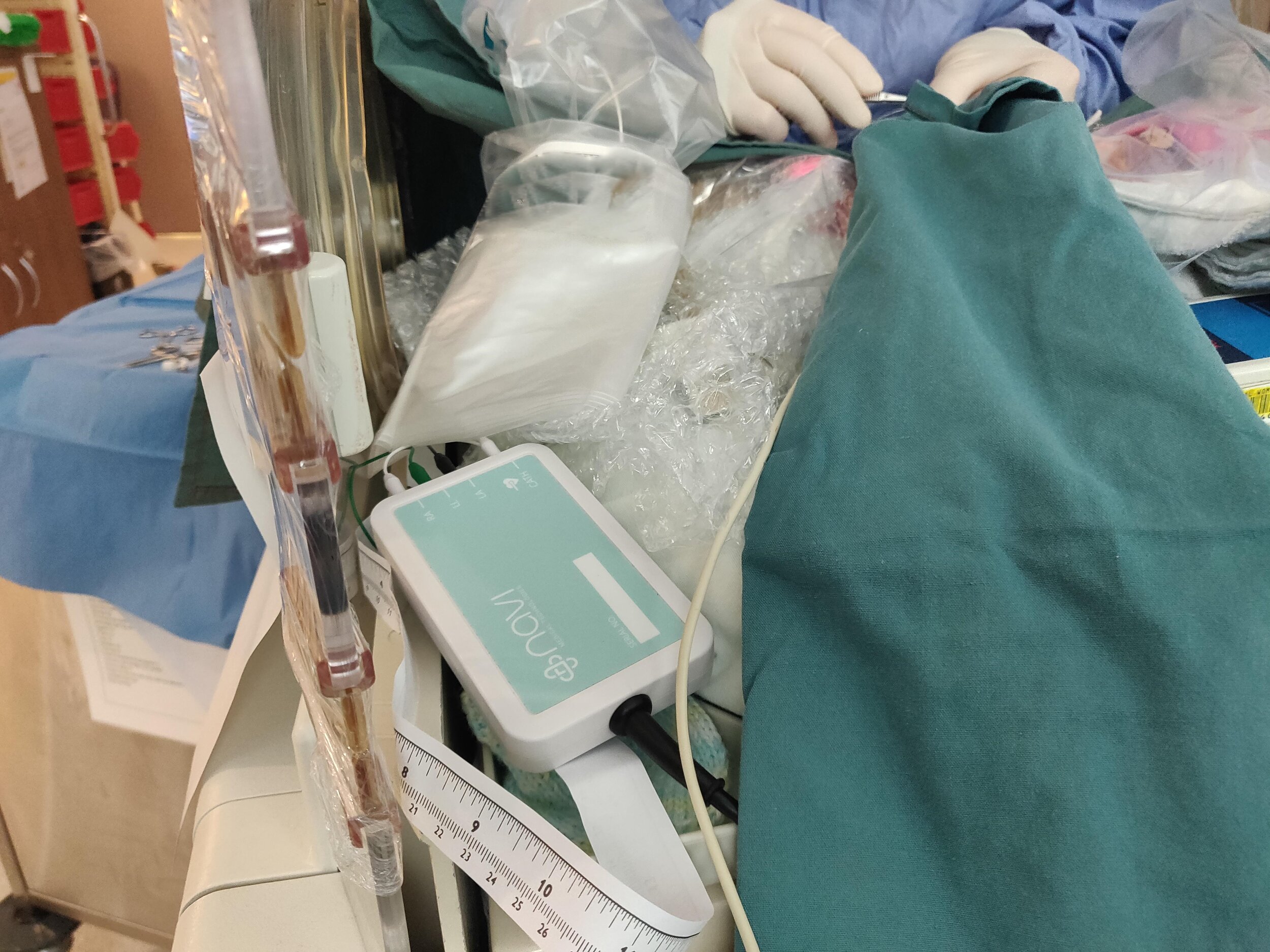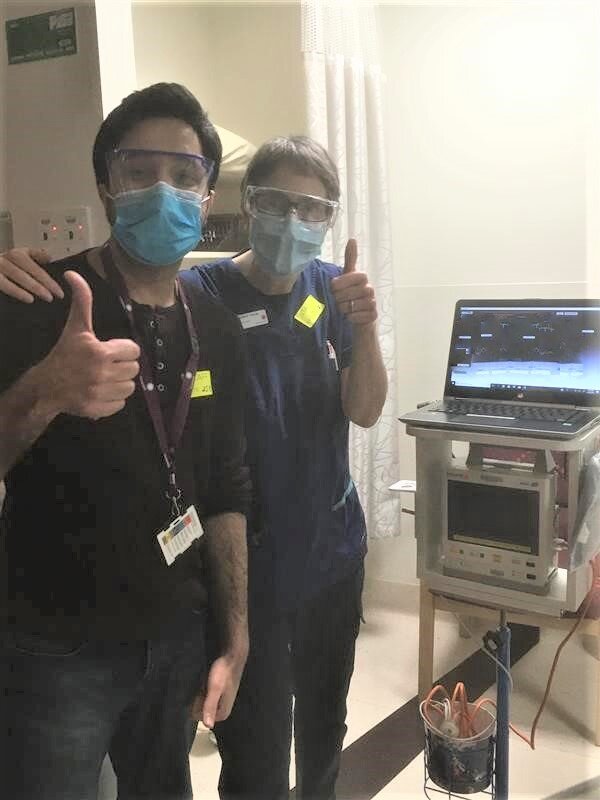Central catheter placements in critically-ill children is a relatively common surgical procedure. However, once the catheter enters the patients blood vessel, it is an unknown where the catheter tip ends up during the procedure. For clinicians, this lack of easily accessible, real-time feedback is one the challenging aspects of performing these procedures. Currently, the most common method of confirming the catheter tip location is the use of x-ray, but only after the procedure has taken place. The result - around 40% of catheters are misplaced during the insertion procedure, often requiring clinicians to repeat the procedure that ultimately delays treatment to critically-ill newborn and pediatric patients.
Pictured: Premature newborn in a NICU with an Umbilical Venous Catheter inserted
The problem doesn’t stop there. After the initial placement location has been confirmed, the dwell time (the time the catheter remains inside the patient) can be up to 30 days in some central catheters such as Peripherally Inserted Central Catheters (PICC’s). During this time, the catheter can move or “migrate” from a safe location to other areas in the body, which can have a significant on impact treatment, or cause serious harm to the patient. What’s most concerning is the frequency these migration events can occur, with recent studies showing up to 50% of correctly placed catheters migrate within 7 days.
For example, a correctly placed catheter in the Inferior Vena Cava (a high blood flow vessel area located just below the heart) could migrate away from the safe position over several days and end up in the heart. This can cause a number of complications such as cardiac tamponade, where fluid builds up in the space around the heart that can ultimately extend patient hospital stay, or worse, could be fatal.
Animation example of catheter migrations and related complications
While ECG Tip Location Technologies have been developed in recent years to help with the catheter placement problem, current technologies primarily focus on the adult population, and only focus on the initial placement of the catheter while mostly ignoring the migration issue.
“90% of catheters had migrated from their position on the preceding scan”
Shing Yue Sheung, Navi COO and Biomedical Engineer, knows all too well the current limitations of existing ECG Tip Location Systems,
“Most ECG Tip Location Systems on the market today have limited capabilities when dealing with the pediatric cohort, especially premature newborns. Speaking with neonatologists and clinical staff from around the world, it had become clear to the Navi team that catheter migration was a big problem, possibly bigger than misplacement on insertion, and that it needed a solution.”
There is growing evidence that supports the need for a technology that can provide clinicians with surveillance capabilities of the catheter during its dwell time. Migration, and the subsequent complications that follow, lead to poor patient outcomes as well as increased costs to hospitals.
A 2018 study by Hoellering A et. al.1 identified that migration prevalence in a neonatal cohort of patients was staggaringly high, showing “90% of catheters had migrated from their position on the preceding scan” after correct initial insertion.
Another recent paper in 2021 by Acun, C et al.2 highlighted that “catheter migration is the most common complication in neonates”, recommending periodic imaging during the first 3 days after PICC insertion (as most migration occurred within this period).
Explainer Video On How The Neonav ECG Tip Location System will help with catheter misplacement and surveillance
Navi’s Neonav® ECG Tip Location System, which is currently in development, will address this gap in catheter surveillance, by developing a device that not only is specifically designed for critically-ill newborn and pediatric patients, but also will provide clinical staff with a comprehensive means of catheter tip surveillance - from initial insertion right through its dwell time. This will enable faster treatment, reduced complications, improved hospital efficiencies and reduced costs, ultimately leading to better patient outcomes, and enabling children everywhere to live brighter, healthier futures.
Hoellering, Adam et al. “Study of movement of umbilical venous catheters over time.” Journal of paediatrics and child health vol. 54,12 (2018): 1329-1335. doi:10.1111/jpc.14073
Acun, C., Baker, A., Brown, L. S., Iglesia, K. A., & Sisman, J. (2021). Peripherally inserted central catheter migration in neonates: Incidence, timing and risk factors. Journal of Neonatal-Perinatal Medicine, (Preprint), 1-7.







